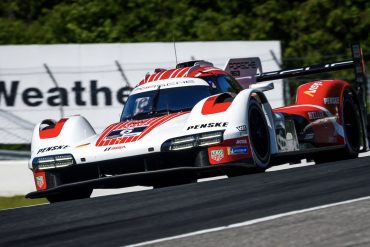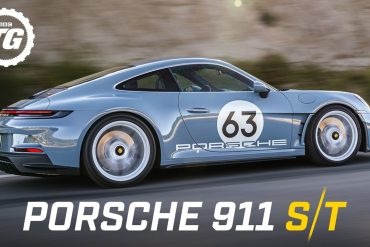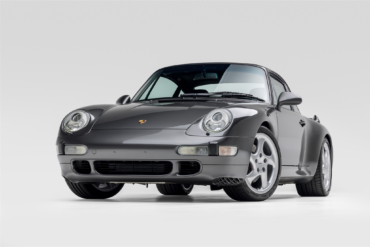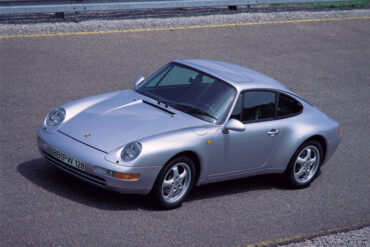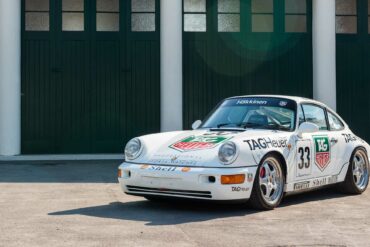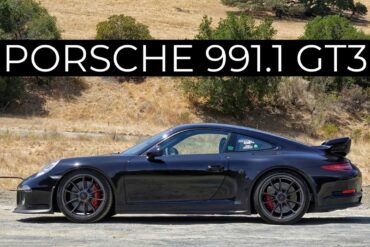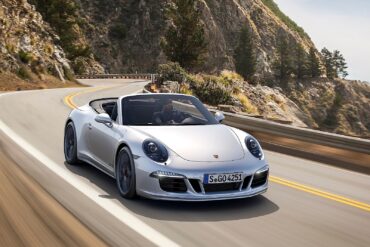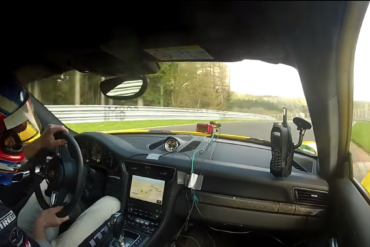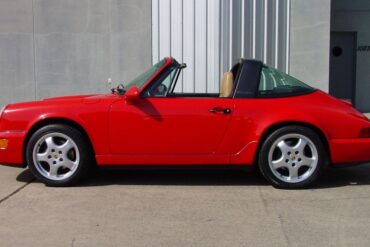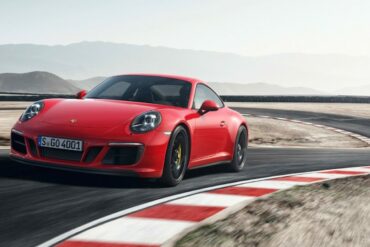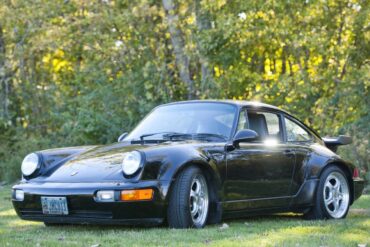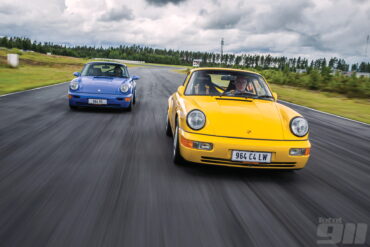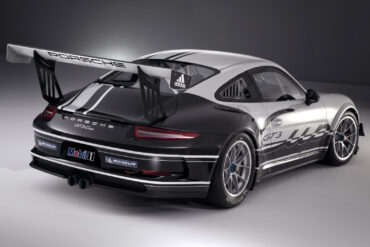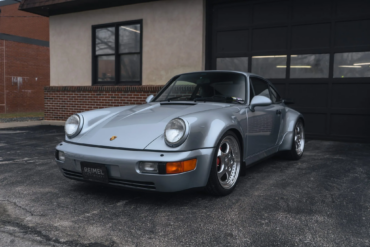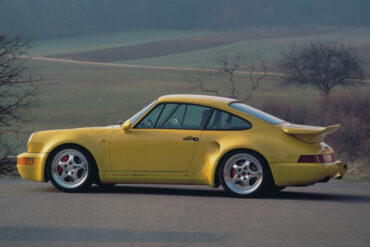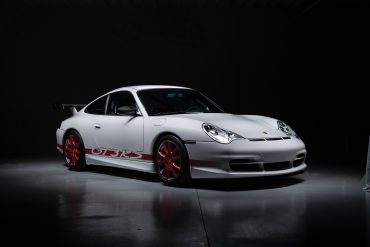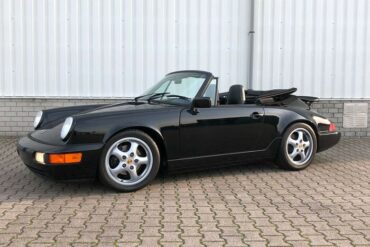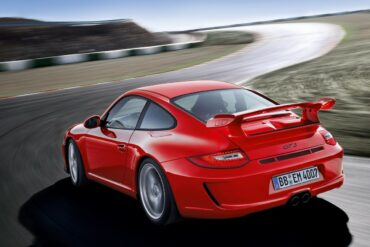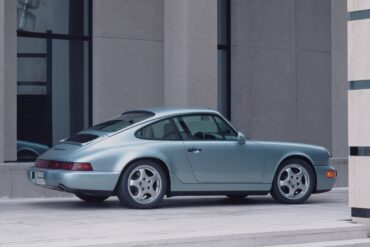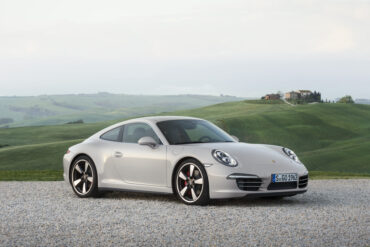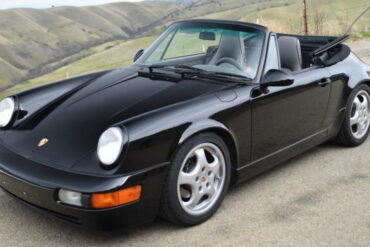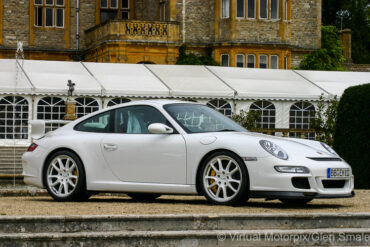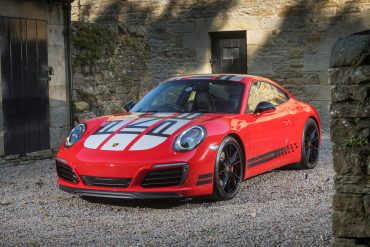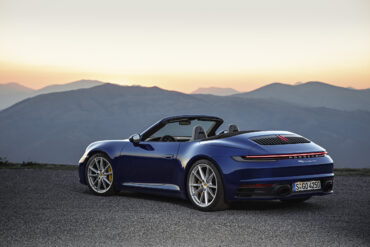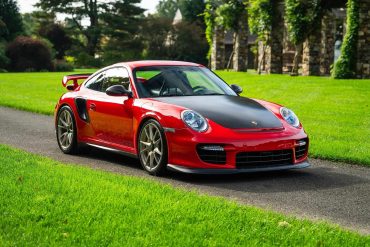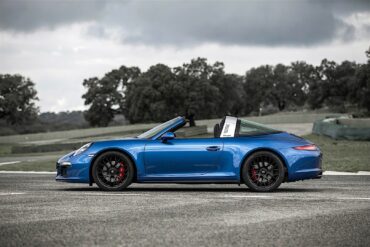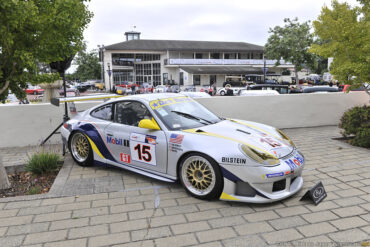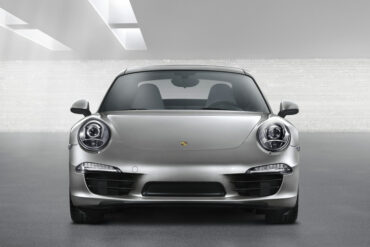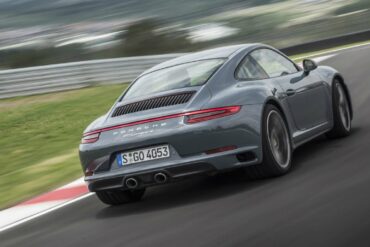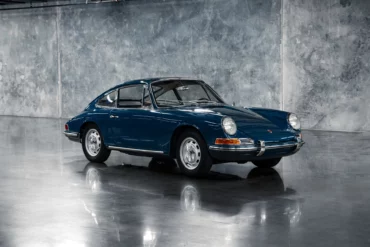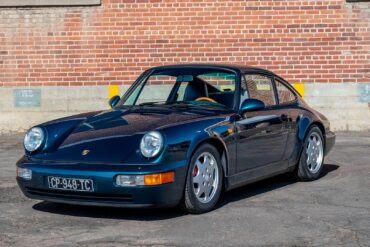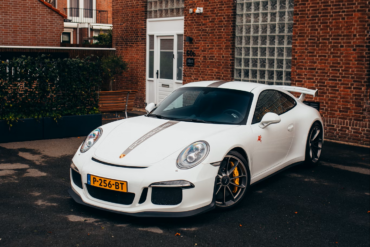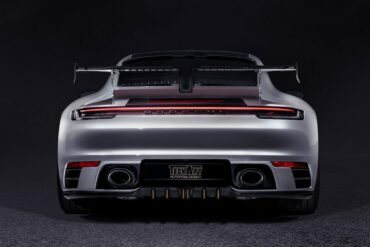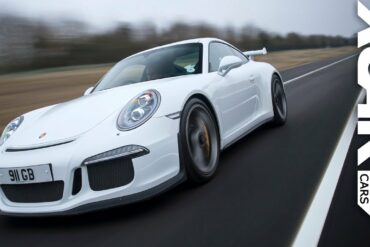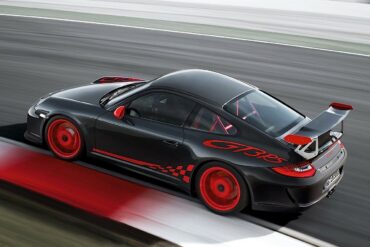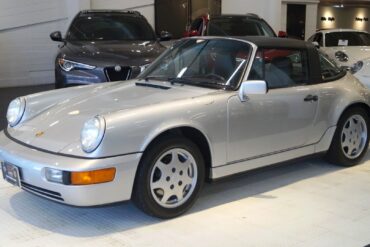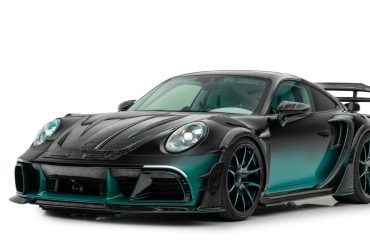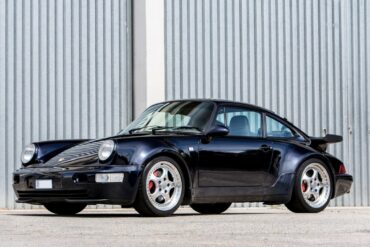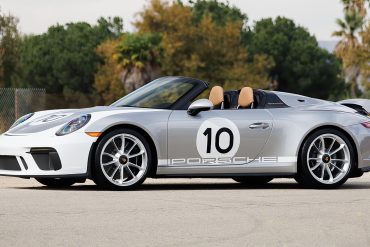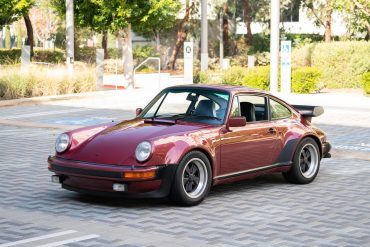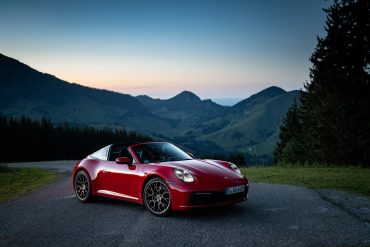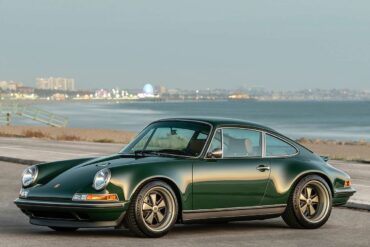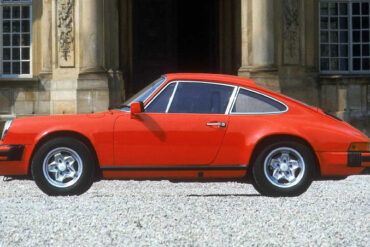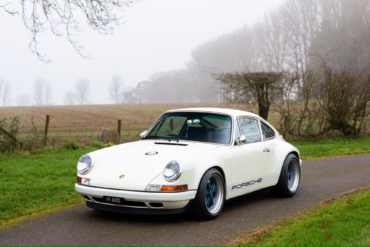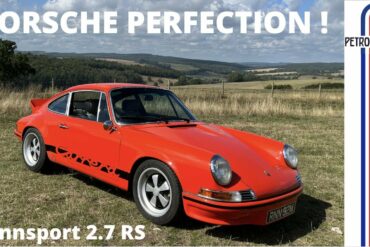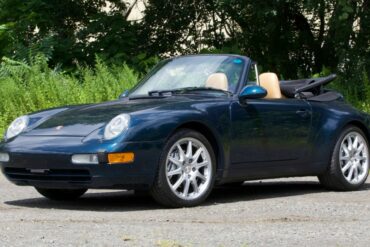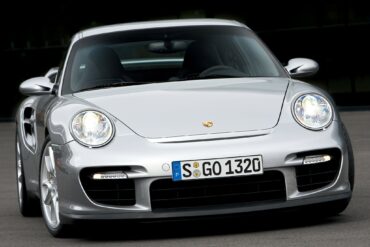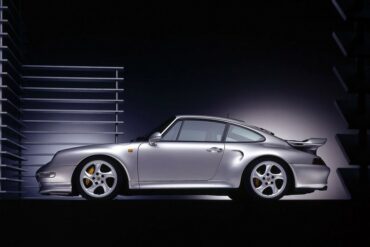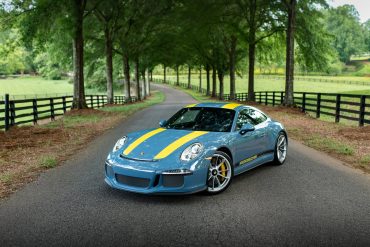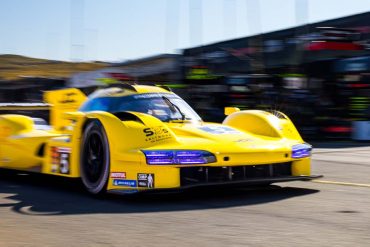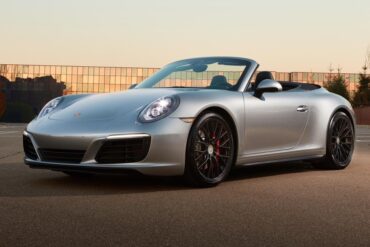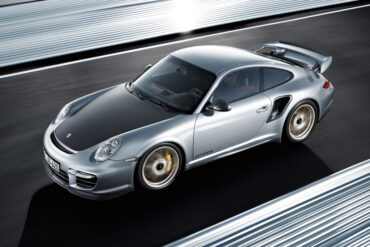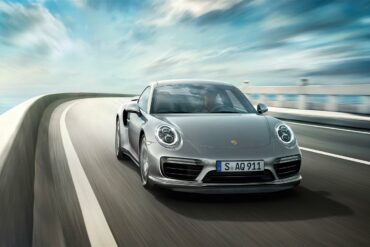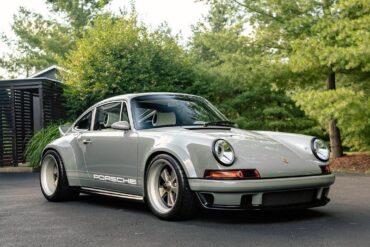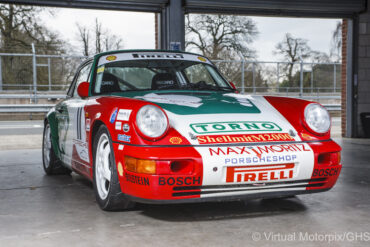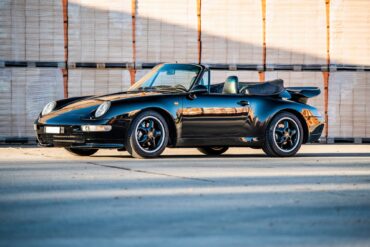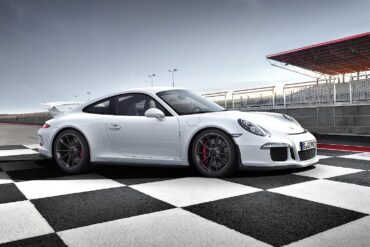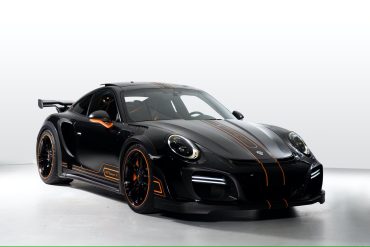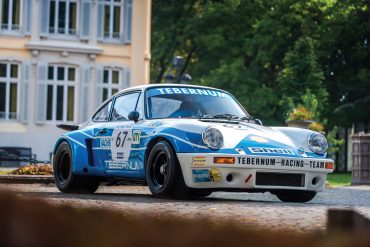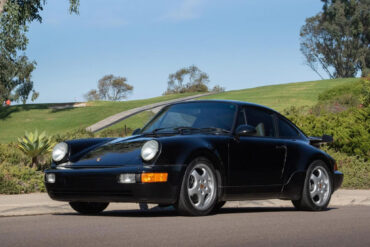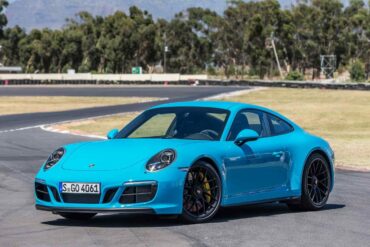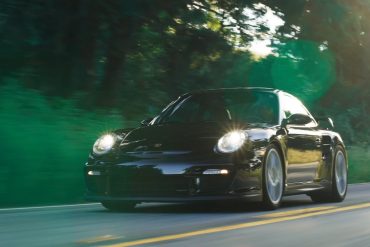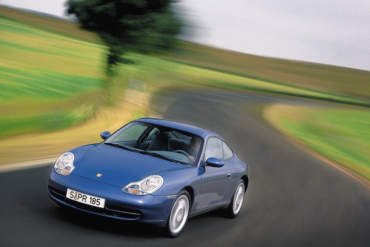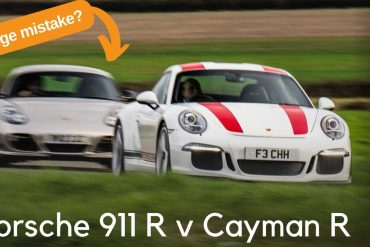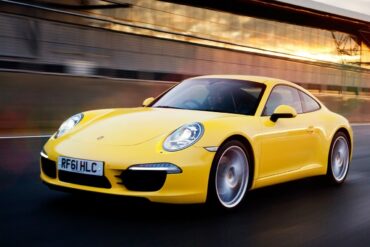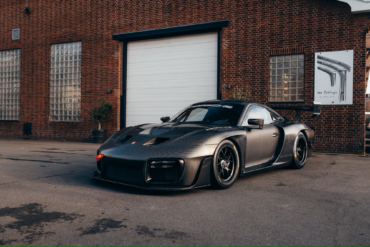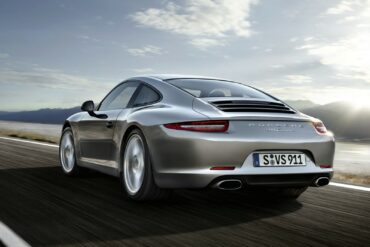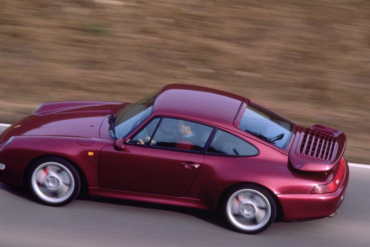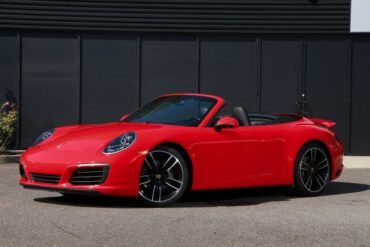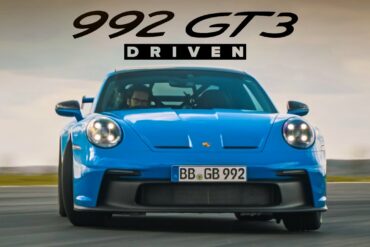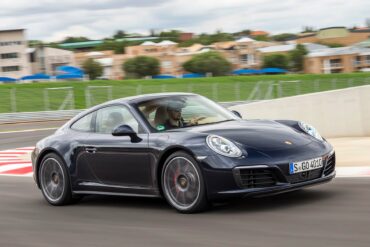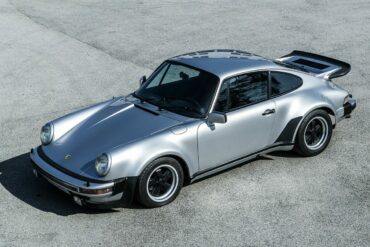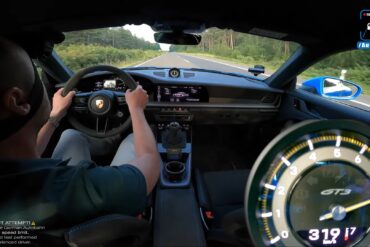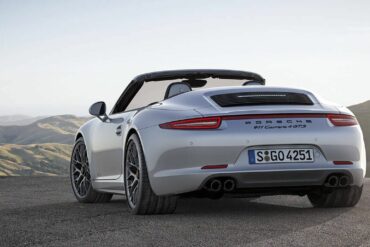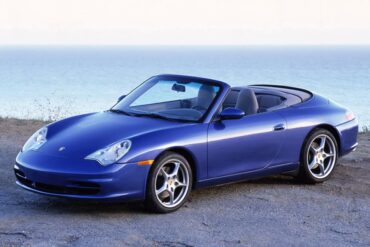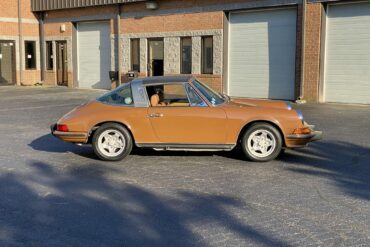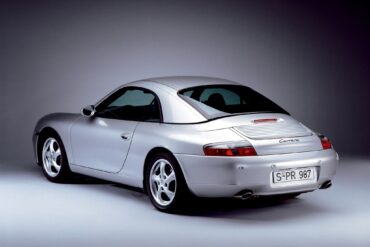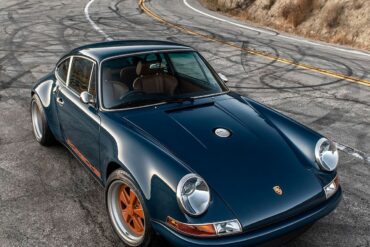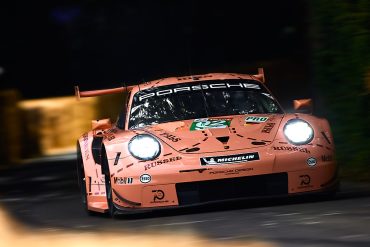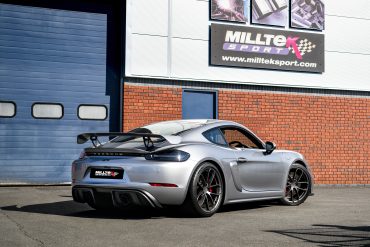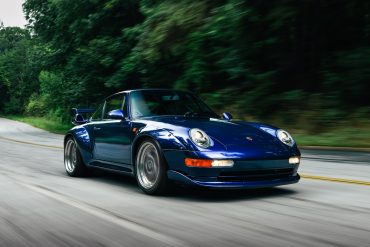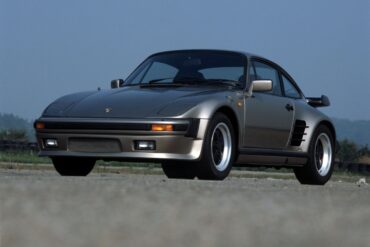Lack of speed in Qualifying Works driver Felipe Nasr has qualified in fifth for round six of the IMSA WeatherTech...
Porsche 911
All
- Porsche 912
- 911 Carrera RS 2.7
- Porsche 901 (911)
- Porsche 911 (F-Series)
- Porsche 911 (991)
- Porsche 911 (G-Series)
- Porsche 911 (964)
- Porsche 911 (993)
- Porsche 911 (996)
- Porsche 911 (997)
- 911 Speedster Concept
- Porsche 911 (992)
- 964 Carrera 2
- 964 Carrera 4
- ’30 Jahre’ Anniversary
- 964 Speedster
- 964 Turbo
- 964 Carrera RS
- 964 Carrera Cup
- 964 RSR
- 993 Carrera
- 993 Carrera 4
- 911 Edition 50
- 993 Carrera 4S
- 911 2.0 Bertone Roadster
- 993 Carrera S
- 993 Targa
- 992 Sport Classic
- 993 Turbo
- 996 Carrera
- 993 Carrera RS
- 992 America Edition 911
- 996 Carrera 4
- 993 GT2
- 996 Targa
- 993 Carrera Cup
- 996 Carrera 4S
- 996 Turbo
- 996 Turbo S
- 996 GT3
- 996 GT3 RS
- 996 GT2
- 996 GT3 Cup
- 996 GT3 R
- 996 GT3 RSR
- 997 Carrera
- 996 GT3 RS Race
- 997 Carrera S
- 997 Carrera 4
- 997 Carrera 4S
- 997 Targa
- 911 Carrera 3.0 Coupe (G-Series)
- 997 Targa 4S
- 997 Turbo
- 997 Turbo S
- 997 GT2
- 992 Carrera T
- 997 GT2 RS
- 997 Speedster
- 997 Carrera GTS
- 992 Dakar
- 997 Carrera 4 GTS
- 997 GT3 Cup
- 997 GT3 R
- 997 GT3 RSR
- 997 GT3
- 997 GT3 RS
- 997 GT3 R Hybrid
- 991 Carrera
- 991 Carrera 4
- 991 Carrera S
- 991 Carrera 4S
- 991 Targa 4
- 991 Targa 4S
- 991 Turbo
- 991 Turbo S
- 991 Carrera GTS
- 991 Carrera 4 GTS
- 991 Targa 4 GTS
- 991 911 R
- Porsche 992 GT2 RS
- 991 GT3
- 991 GT3 RS
- 991 GT2 RS
- 991 Speedster
- 991 GT3 R
- 991 GT3 Cup
- 991 RSR
- 991 Carrera T
- 992 Carrera 2
- 992 Carrera 4
- 992 Carrera S
- 992 Carrera 4S
- 992 Targa 4
- 992 RSR
- 992 Targa 4S
- 992 Carrera GTS
- 992 Carrera 4 GTS
- 992 Targa 4 GTS
- 992 Turbo
- 992 GT3 R
- 992 Turbo S
- 992 GT3
- 992 GT3 Touring
- 992 911 S/T
- 911 (G-Series)
- 992 GT3 RS
- 992 GT2 RS
- 992 GT3 Cup
- 911 Carrera 3.0 (G-Series)
- 911 S (G-Series)
- 911 Carrera RSR 2.8
- 911 SC (G-Series)
- Porsche 992 GT3 R Rennsport
- 911 S/T
- 911 Carrera 3.2 (G-Series)
- 911 (Base Model)
- 911 Turbo (930)
- 911 SC Safari
- 911 L
- 911 Carrera RSR Turbo 2.1
- 911 T
- 911 Carrera RSR 3.0
- 911 E
- 911 S
- 911 SC San Remo
- 911 Carrera 3.2 Clubsport
- 911 R
- Porsche 953
- 911 Carrera RS 3.0
- 911 T/R
- 911 Carrera 25th Anniversary
- 911 SC RS
- 911 Turbo LE
- 911 Carrera Commemorative
- 911 Carrera 2.7 (G-Series)
- 911 3.2 Speedster
- 911 Turbo 2.7
- 964 Turbo S
A 60th birthday is a significant milestone, and Porsche has commemorated the occasion with the 911 S/T, a limited-edition sports...
Bring A Trailer is currently offering a gorgeous example of a 1997 Porsche 911 Turbo, one of the marque’s final...
Porsche Option Codes – Porsche 911 Type 993 (1994 Model Year) Looking to decode your 1994 Porsche 911 option codes?...
964 Carrera Cup Champions & Results 964 Carrera Cup Germany 1990 Olaf Manthey Rüdiger Schmitt Wolfgang Land 1991 Roland Asch...
One of the BEST Sportscars Money Can Buy I’ve always wondered if there existed a realistically attainable sportscar that could...
So what else do you get when you buy a 991 Carrera 4 GTS Cabriolet? First of all you get a 30 hp bump over the Carrera 4S to 430 hp from the 3.8L naturally aspirated flat-six. You get forged centre-lock black 20-inch wheels, dynamic engine mounts, the Sports Chrono Package, PASM adaptive damping with a lowered ride height, an interior swathed in Alcantara, a sinister front fascia with black intakes and custom rear apron with black tailpipes that broadcast the goods through an uber-nasty sport exhaust system. Other trim details include black lettering and smoked headlights.
Porsche 911 Carrera S (991.2) 7.34 min Nordschleife Video Onboard sport auto-Tester Christian Gebhardt: Nordschleife Porsche 911 Carrera S (991.2),...
1992 Porsche 911 Carrera 2 Targa (964) Technical Specifications Engine Type Flat 6 Induction Normally-aspirated Cooling Air/oil-cooled Valvetrain Single overhead...
We present our Full HD wallpaper for desktop of Ferrari 812 Superfast in high resolution and quality, as well as an...
Evolution at its best The Porsche 911 GT3 has broken the mould in recent years. Not by developing cutting edge...
1992 Porsche 911 Turbo 3.3 Coupe (964) Technical Specifications Engine Type Flat 6 Induction Turbocharged Cooling Air/oil-cooled Valvetrain Single overhead...
Introduced as the most powerful and high-performance production 911 variant ever built, the Porsche 991 GT2 RS boasts a twin-turbocharged...
Rare & Special Race Versions of the 964 For issue 131 of Total 911, you may remember that we made...
(2013-2016) Porsche 911 GT3 Cup (991.2) Technical Specifications Type Racing Car Built At Stuttgart, Germany Engine Flat-6 Position Rear, Longitudinal...
You can say that the 3.6-liter 964 generation Porsche 911 Turbo was indeed a special car and that still remains...
Porsche made a lightweight version of the Turbo simply known as the Tuubo S. This used the spartan appointments of the Carrera RS with an upgraded version of the Turbo engine. Some cars received graphics on the side celebrating IMSA Supercar Championship. Similar to the Carrera RS, the Turbo S had no power steering, air conditioning, airbags, central locking, alarm system, rear window wiper, smaller window washer reservoir, smaller horn, and had thin-gauge glass. The engine used a second oil cooler and slightly higher boost to improve overall performance.
The 2004 Porsche 911 GT3 RS serves as a homologation model, designed to comply with the new international GT rules...
Porsche 997.2 GT3 RS Video Review This is the Porsche 997.2 GT3 RS and we’re back for Season Two of...
1990 Porsche 911 Carrera 4 Cabriolet (964) Technical Specifications Engine Type Flat 6 Induction Normally-aspirated Cooling Air/oil-cooled Valvetrain Single overhead...
2010 Porsche 911 GT3 (997.2) Technical Specifications Engine Type Flat 6 Induction Normally-aspirated Cooling Water-cooled Valvetrain Double overhead camshafts Injection Port...
1990 Porsche 911 Carrera 4 Coupe (964) Technical Specifications Engine Type Flat 6 Induction Normally-aspirated Cooling Air/oil-cooled Valvetrain Single overhead...
The 2014 50th Anniversary Edition 911 was built by Porsche to commemorate the 911’s birthday, 50 years after its production launch in 1964. In homage to 1963, the year the 911 debuted at the 1963 Frankfurt Motor Show, production was limited to 1,963 units. The 50th Anniversary uses the wider body from a Carrera 4S (but remains only rear-wheel-drive) and is lower than a standard Carrera by 10mm. The 20 inch-alloys are a modern take on the original Fuchs wheels, and the seats are finished in “Pepita” cloth. Includes Porsche Active Suspension Management (PASM), sports exhaust and powerkit tickled 430 hp flat six.
Porsche 911 (992) GT3 Touring Review Chris got the opportunity to get behind the wheel of the Porsche GB demonstrator...
1994 Porsche 911 Carrera 2 Cabriolet (964) Technical Specifications Engine Type Flat 6 Induction Normally-aspirated Cooling Air/oil-cooled Valvetrain Single overhead...
Designed and manufactured by Porsche Exclusive, also known as the ‘Special Wishes Department’, this department of the factory is dedicated...
2020 – Present Porsche 911 Carrera 4S Cabriolet (992) Pictures & Gallery...
Does the turbocharged 911 move the game on enough? After a mammoth road test in issue 137, Total 911 decide...
Porsche introduced the 997 GT2 RS in the United States in October 2010 with an initial price of $245,000 MSRP....
Which Porsche 911 Would You Choose? Which of the two most potent Porsche 911s on sale is quickest around a...
2016 Porsche 911 Targa 4 GTS (991) Technical Specifications Porsche Models Technical Data 911 Targa 4 GTS Engine Engine layout Rear...
The 996 GT3 R was a one-year-only (2000 model year) special of which only 63 were produced. The car took the basic GT3 bones and amplified it for motorsport. The Mezger engine produced over 400 horsepower, while factory-fitted adjustable shock absorbers gave better handling. Most notably, the GT3 R wore carbon-fiber bodywork meant for ultimate light weight in motorsport. The 996 GT3 R was introduced in 1999 as a replacement for the 993 RSR. Before its introduction, it was extensively tested at Weissach and Paul Ricard. In the 2000 FIA GT Championship, the 996 GT3 R was in the N-GT class and won every run. Won the 24-hour race at the Nürburgring.
2012 – 2015 Porsche 911 Carrera Pictures & Gallery...
2016 Porsche 911 Carrera 4 Coupe (991.2) Technical Specifications Engine layout Rear Engine Engine type Boxer, twin-turbo Cylinders 6 Valves per...
The first 912s were made in the spring of 1965, alongside the last of the 356s. Originally the 912 was...
Details, Driving & Acceleration Run Included The time has finally come for Mat to get his hands on the new...
Get ready to add a unique air-cooled 911 from the early 1990s to your Porsche collection as Broad Arrow Auctions...
Porsche introduced the 991 GT3 for the 2014 model year, as follow up to the multiple 997 GT3 variants. The...
TechArt has been an upgrade, aesthetics, and tuning house for Porsche’s since it was first formed in 1987. Everything from...
They Tell Us Not to Worry. I Worry. Let’s See. The latest generation of GT3, the 991, is here and...
Autocar Drives the New GT3 On Track This is the new 2021 Porsche 911 GT3. And it is different: bigger,...
2012 Porsche 911 GT3 RS (997.2) Technical Specifications Engine Type Flat 6 Induction Normally-aspirated Cooling Water-cooled Valvetrain Double overhead camshafts Injection...
1990 Porsche 911 Carrera 2 Targa (964) Technical Specifications Engine Type Flat 6 Induction Normally-aspirated Cooling Air/oil-cooled Valvetrain Single overhead...
The current Turbo S comes with an all-new, 3.8 liter boxer six with two variable turbine geometry (VTG) turbochargers. The...
For almost 50 years, the Porsche 911 Turbo as a classic Coupé (and for more than 20 years in the...
1994 Porsche 911 Turbo 3.6 Coupe (964) Technical Specifications Engine Type Flat 6 Induction Turbocharged Cooling Air/oil-cooled Valvetrain Single overhead...
For those already in the know, the GT3 Touring model is as exceptional as it has become familiar over the...
The original light-weight The Speedster variant of the 356 was introduced in 1954, featuring a low-raked windscreen, bucket seats, and...
Porsche introduced the 930 Turbo in 1975, pairing a KKK turbocharger with the 3.0-liter Carrera RSR engine in road trim,...
2021 – Present Porsche 911 Targa 4S (992) Pictures & Gallery...
Porsche 911 (993) GT2 Driven Charles Morgan takes us through one of his favourite cars – the 911 993 GT2....
Singer Vehicle Design – Triplet Commission Today, we take a closer look at the Triplet commission, one of Singer Vehicle...
A Thorough Review of the 991 GT3 The all-new 991-generation Porsche 911 GT3 faces its toughest challengers on road and...
Porsche 911 (G-Body) Paint Color Options This post outlines all the color options for the original G-Body generation Porsche 911...
Dubbed “Newcastle Commission,” the car is based on a 964 Carrera 2. This 911 Reimagined by Singer also features the...
Real World Carrera RS Review The 2.7 Carrera RS debuted in October 1972 at the Paris Motor Show, and was...
Rennsport Reunion 7 is just around the corner and this year is extra special as it is also the 75th...
1995 Porsche 911 Carrera 4 Cabriolet (993) Technical Specifications Engine Type Flat 6 Induction Naturally Aspirated Cooling Air/oil-cooled Valvetrain Single...
Which Is Better? Do you have around £85,000 on your next car? Then look no further… We’ve brought together the...
2009 Porsche 911 GT2 (997) Technical Specifications Engine Type Flat 6 Induction Twin-turbocharged Cooling Water-cooled Valvetrain Double overhead camshafts Injection Port...
1998 Porsche 911 Turbo (993) Technical Specifications Engine Type Flat 6 Induction Twin-turbocharged Cooling Air/oil-cooled Valvetrain Single overhead camshaft Injection...
The 2016 Porsche 911 R, despite its limited production, quickly gained popularity among dedicated Porsche collectors and automotive enthusiasts worldwide....
Back in the States The Le Mans debacle is over, and now it’s time for Porsche Penske Motorsport to head...
2016 – 2019 Porsche 911 Carrera 4S Cabriolet (991.2) Pictures & Gallery...
Porsche’s 911 GT2 RS is a brute, a lightweight, twin-turbocharged, 620-hp bout of madness that stemmed from Stuttgart’s quest to see how high up the sports-car ladder the 911 could punch. It is the most serious roadgoing Porsche ever. The engine is a port-injected, 3.6-liter flat-six from the Le Mans–winning GT1 race car of the late ’90s, with a pair of variable-geometry turbochargers huffing a maximum of 23.2 psi of boost into the combustion chambers. The result is 620 hp at 6500 rpm and 516 lb-ft of torque at 2250. It gets a six-speed manual gearbox and rear-drive only. Yikes.
2018 Porsche 911 Turbo Coupe (991.2) Technical Specifications Engine Engine layout Rear Engine Engine type Boxer, twin-turbo Cylinders 6 Valves per...
Singer Vehicle Design – Quartz DLS Commission Today, we take a closer look at the Singer Vehicle Designs Quartz Commission....
Is the base 911 Carrera a better buy than the Carrera S? The new 992 version of the 911 is...
Introduced in 1989 (the year of the 911’s 25th anniversary), the 964 Carrera 4 was a significant new model for the company, but the 4-wheel drive system was deemed unsuitable for the company’s racing series. Manufactured alongside the Carrera 4 at the same time was the more traditional rear-wheel drive Carrera 2, but this model’s launch was only planned for a year later, in the hope that it would not detract from potential sales of the Carrera 4. The 1990 season was the first season that saw the 911-based model become the pillar on which the Porsche Carrera Cup series has been established.
Behind the Wheel of a 964 Carrera 2 Quick review of this beautiful 1990 Porsche 911 964 Carrera 2 manual...
The Porsche 911 Turbo Cabriolet (993 generation) is an incredibly rare car – only 14 were built in 1995, in the early days of 993 production. Rather than the contemporary twin-turbo powerplant in the 993 Turbo Coupe, the 993 Turbo Cab was fitted with the single turbo of the 964 Turbo 3.6. Although the Turbo Coupé was introduced earlier, the actual production started after the Turbo Cabriolets were sold. Turbo Cabriolets were 1995 models by VIN and Turbo Coupés were immediately produced as 1996 models although the 1996 model year had not yet started.
2015 Porsche 911 GT3 (991) Technical Specifications type Series Production Car released at 2013 Geneva Motor Show built at Stuttgart, Germany...
TechArt has transformed this 991.2-generation 911 Turbo S into their high-performance ‘GTStreet R’ specification. The car is coated in a...
The Carrera RSR 3.0 is one of those rare and super-special Porsches, and one of the most successful Group 4...
Bring a Trailer is currently offering two very interesting Porsche 911s, a 1991 Porsche 911 Turbo and a low-mileage 1994...
2017 – 2019 Porsche 911 Carrera GTS (991.2) Pictures & Gallery...
The 997 GT2 debuted in late 2007 as a 2008 model. Its 3.6-liter flat-six engine, featuring variable geometry turbochargers and...
2000 Porsche 911 Carrera 4 Coupe (996) Technical Specifications Engine Type Flat 6 Induction Normally-aspirated Cooling Water-cooled Valvetrain Double overhead...
The letter “R” might seem ordinary, but in the Porsche world, it signifies something much more. It’s a badge of...
2013 Porsche 911 Carrera S Coupe (991) Technical Specifications Engine Type Flat 6 Induction Normally-aspirated Cooling Water-cooled Valvetrain Four overhead camshafts,...
Collecting Cars is proud to offer this limited edition and almost new 2019 Porsche 935. The 935 tribute car was...
2013 Porsche 911 Carrera Coupe (991) Technical Specifications Engine Type Flat 6 Induction Normally-aspirated Cooling Water-cooled Valvetrain Four overhead camshafts, four...
1997 Porsche 911 Turbo (993) Technical Specifications Engine Type Flat 6 Induction Twin-turbocharged Cooling Air/oil-cooled Valvetrain Single overhead camshaft Injection...
2019 Porsche 911 Carrera 4 Cabriolet (991.2) Technical Specifications Engine layout Rear Engine Engine type Boxer, twin-turbo Cylinders 6 Valves per...
Henry Catchpole Spanks the New GT3 Henry Catchpole takes the eagerly awaited 2022 Porsche 911 GT3 (992 generation) out on...
Thought it carries a similar design to the new 911, the Carrera 4 has its own unique features, the most obvious being an AWD system hooked up to its new turbocharged 3.0-liter flat-six engine. The C4 gets a spate of new goodies, including a unique taillight section, and an updated infotainment system that brings the sports car’s connectivity to a whole new level. Inside the new 911 Carrera 4, there are only a few changes, the most important is the new infotainment system. With 370 hp on tap from the direct-injection, twin-turbo flat-six and all-wheel drive putting all those ponies to the ground, the C4 is more than quick enough.
The 911 Turbo was put into production in 1975. While the original purpose of the 911 Turbo was to gain homologation for the 1976 racing season, it quickly became popular among car enthusiasts. Ernst Fuhrmann adapted the turbo-technology originally developed for the 917/30 CAN-AM car and applied it to the 3.0 litre flat-six used in the Carrera RS 3.0, thus creating what Porsche internally dubbed as the 930. Total power output from the engine was 260 bhp and 254 ft lbs of torque.
Top Speed Blast On Public Roads in the Latest GT3 I have never been a big fan of top speed...
Porsche Option Codes – Porsche 911 (2015 Model Year) Looking to decode your 2015 Porsche 911 option codes? Want to...
The 996 was initially available in a coupé or a cabriolet (Convertible) bodystyle with rear-wheel drive, and later with four-wheel drive, utilising a 3.4 litre flat-6 engine generating a maximum power output of 221 kW (300 PS; 296 hp).[7] The 996 had the same front end as the entry-level Boxster. After requests from the Carrera owners about their premium cars looking like a "lower priced car that looked just like theirs did", Porsche redesigned the headlamps of the Carrera in 2002. With the cabriolet, buyers have a choice between this version and the hotter Carrera 4S cabriolet.
1972 – 1973 Porsche 911 E 2.4 Targa (LWB) Pictures & Gallery...
2001 Porsche 911 Carrera Cabriolet (996) Technical Specifications Engine Type Flat 6 Induction Normally-aspirated Cooling Water-cooled Valvetrain Double overhead camshafts...
Singer Vehicle Design – Silverstone Commission Today, we take a closer look at the Singer Vehicle Designs Silverstone Commission. The...
75th Anniversary The Stuttgart marque took center stage at this year’s Festival of Speed to pay tribute to the 75th...
The leading premium performance exhaust manufacturer, Milltek Sport, is working on creating an even more dynamic Porsche 911 (992) with...
Bring A Trailer is currently offering a low mileage and eye-catching example of Porsche’s 991.2 generation track-focused supercar that also...
If you want the ultimate version of the air-cooled 911, then you should get this 1996 Porsche 911 GT2 currently...
1981-1989 Porsche 911 Turbo 3.3 SE ‘Flachbau’ Pictures & Gallery ...


